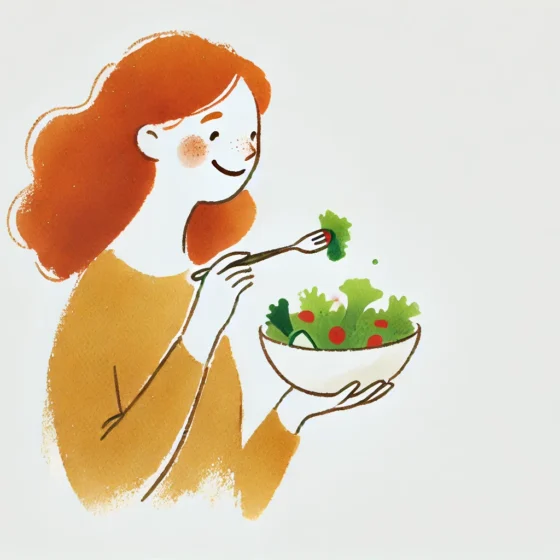In an era where the average consumer thinks “farm-to-table” means scoring that last bag of salad mix from the back of the supermarket shelf, the concept of food preservation swoops in like a superhero with a sustainable cape. It’s not just about finding ingenious ways to keep your grandmother’s tomato sauce from spoiling; it’s a venerable crusade against food waste, a rally for food security, and a bold nod to the ethos of resourcefulness. The act of freezing, salting, or employing any method of food preservation isn’t just a culinary hack; it’s a statement, a stance, an ethical practice that whispers (or, let’s be real, shouts) to the world: “Yes, I care about my planet and the footprint I leave behind!”
Now, let’s dissect this caped crusader’s toolbox, shall we? This article will navigate through the vibrant fields of understanding ethical eating and sustainability, because defining food preservation is only the appetizer in this feast of knowledge. We’ll explore the role of local farms and dig into the organic produce trend—not to mention the impact our food choices have on health and the environment. Because let’s face it: navigating the challenges of ethical eating is as complex as trying to pronounce “quinoa” for the first time. From regenerative agriculture practices to the various food preservation examples that go beyond mere salting and freezing, this guide aims to arm you with the knowledge to make informed culinary choices. Because who said saving the world couldn’t be delicious?
Understanding Ethical Eating and Sustainability
Defining Ethical Eating
Ethical eating involves considering the economic, social, and environmental impacts of food choices. This concept has gained traction as consumers increasingly prioritize animal welfare, social justice, and environmental stewardship in their purchasing decisions. Ethical eating is not just about personal health but also about the broader consequences of food production and consumption on society and the environment.
The Importance of Sustainability in Food Sources
Sustainability in food sourcing is crucial for minimizing environmental damage and supporting local economies. By choosing locally sourced ingredients, restaurants and consumers can reduce transportation costs and emissions, thereby lessening their carbon footprint. Additionally, sustainable practices in food sourcing include using energy-efficient equipment and reducing food waste, which significantly impacts environmental preservation.
Aligning Culinary Desires with Sustainable Practices
Aligning culinary practices with sustainability can be achieved through various methods such as implementing zero-waste cooking and opting for sustainable packaging. These practices not only help in reducing the environmental impact but also play a vital role in conserving resources. For instance, choosing compostable or recycled materials for packaging and reducing single-use plastics are steps towards a more sustainable culinary operation. Moreover, educating customers and staff about sustainable practices can further enhance the effectiveness of these efforts.

The Role of Local Farms and Organic Produce
Benefits of Supporting Local Farms
Local farms significantly bolster the community by reinvesting profits locally, which enhances the local economy and supports community life. By purchasing directly from these farms, consumers ensure better financial returns for farmers, helping them compete against large agribusiness. Additionally, local farms often employsustainable practices that minimize environmental impact, thereby protecting the environment and producing healthier, fresher food.
Organic vs. Non-Organic: A Sustainability Perspective
Organic farming, known for its avoidance of synthetic pesticides and fertilizers, enhances biodiversity, improves soil quality, and reduces pollution. However, it’s crucial to recognize that organic farming can sometimes require more land and potentially increase greenhouse gas emissions compared to conventional methods. Despite these challenges, organic practices generally contribute to better soil health and lower carbon footprints, making them a preferable choice for sustainable agriculture.
Community-Supported Agriculture (CSA) Programs
Community-Supported Agriculture (CSA) programs strengthen the connection between consumers and producers by allowing consumers to buy shares of a farm’s harvest in advance, which provides farmers with a stable income and reduces financial risks. These programs offer fresh, seasonal food directly to the consumer, fostering a deeper understanding and appreciation of food sources and promoting seasonal eating. The adaptability of CSA programs to consumer preferences and the inclusion of various farm products make them an effective model for supporting local agriculture and enhancing food security.
Impact of Food Choices on Health and Environment
The Environmental Footprint of Our Food Choices
Every action has a reaction, and in the case of our food choices, the environmental impact is staggering. Globally, one-third of all food produced is lost or wasted, which not only squanders resources but also contributes significantly to greenhouse gas emissions. The production and disposal of wasted food generate about 8%-10% of global emissions, highlighting the urgent need for more sustainable practices in our food systems.
Health Benefits of a Sustainable Diet
Switching to a plant-based diet can drastically reduce greenhouse emissions and also offer substantial health benefits. Diets rich in plant-based foods are associated with lower mortality rates and can significantly decrease food-related greenhouse gas emissions by up to 70% compared to traditional meat-heavy diets. Embracing such diets not only aids personal health but also supports global sustainability efforts.
Reducing Waste Through Ethical Eating Habits
Ethical eating involves more than just choosing organic or local— it’s about reducing waste at every step of the food process. In the UK, for instance, individuals are already making strides in reducing food waste, which is crucial for cutting both costs and carbon footprints. By paying attention to consumption patterns and optimizing food storage, consumers can significantly decrease the amount of food discarded, thereby mitigating their environmental impact.

Navigating the Challenges of Ethical Eating
The Accessibility and Affordability of Sustainable Food Sources
Navigating the challenges of ethical eating often starts with addressing the accessibility and affordability of sustainable food sources. Unfortunately, food products grown in harmony with nature often carry a higher price tag, deterring many from making the switch to environmentally friendly options. Additionally, nearly 10% of the global population suffers from hunger due to inadequate access to nutritious foods, further complicating the pursuit of ethical eating. To address these issues, communities can enhance infrastructure to improve food safety and accessibility, ensuring that nutritious and sustainable foods reach those in low-income areas.
Tips for Making Sustainable and Ethical Food Choices
For those looking to overcome the hurdles of ethical eating, several strategies can be employed. Embracing a diet rich in plant-based foods not only lowers one’s ecological footprint but also promotes health benefits, such as reduced risk of chronic diseases. Consumers are encouraged to prioritize plants, moderate their intake of animal products, and choose sustainably harvested seafood. Additionally, adopting practices like zero-waste cooking and opting for sustainable packaging can significantly reduce environmental impact.
Overcoming Obstacles: Availability and Cost Concerns
One significant barrier to ethical eating is the availability of diverse, affordable food options. Urban planning and zoning laws can play pivotal roles in increasing access to healthy food choices by integrating food accessibility into community design processes. Moreover, promoting local and national policies that discourage unhealthy food consumption while supporting healthy vending options can make nutritious foods more economically accessible. For individuals, making informed choices at the grocery store, such as buying in bulk and choosing products with sustainability labels, can help navigate these challenges effectively.
Conclusion
Through this explorative journey, we’ve unpacked the facets of food preservation, ethical eating, and sustainability, underscoring their pivotal role in shaping a greener, more conscientious world. From the intricacies of local farming to the nuances of sustainable dietary habits, it is clear that our food choices echo deeply within the environmental and ethical realms. These endeavors are not just about personal health or culinary preferences but about fostering a sustainable future, highlighting the urgent need for conscious consumption and waste reduction.
As we conclude, it is evident that the path to ethical eating and sustainable living is woven with challenges yet offers immense potential for positive change. By embracing local farms, prioritizing organic produce, and reducing food waste, individuals collectively contribute to a more sustainable and equitable food system. Let this article serve as a call to action—to make informed choices, support sustainable practices, and inspire others to join in the effort towards a healthier planet. The journey towards ethical eating and sustainability is a collective one, where each choice can lead to significant environmental and social benefits.
FAQs
1. How does the practice of preserving food enhance sustainability?
Preserving food plays a crucial role in sustainability by ensuring a steady supply of food throughout the year. This practice allows us to enjoy seasonal foods at any time and helps tackle the global challenge of food scarcity by extending the natural shelf life of food items, thereby significantly reducing food waste.
2. What role do preservatives play in reducing food waste and enhancing food sustainability?
Preservatives and various food preservation methods prevent rapid spoilage and oxidation of food items, enabling manufacturers to safely distribute food nationwide and globally. This process is vital as it maintains the safety and quality of food while combating the primary causes of food spoilage—microbes and oxidation.
3. Why is preserving food considered crucial?
The fundamental purpose of food preservation is to prevent spoilage, allowing time for consumption. Often, gardens produce more food than can be immediately consumed, leading to potential waste. Preservation enables the enjoyment of a diverse range of foods throughout the year, mitigating the issue of overabundance at certain times.
4. In what ways does food preservation enhance our quality of life?
Food preservation is key to reducing food waste, which in turn lowers production costs and enhances the efficiency of food systems. This contributes to improved food security and nutrition and supports environmental sustainability by minimizing the ecological footprint of food production.











